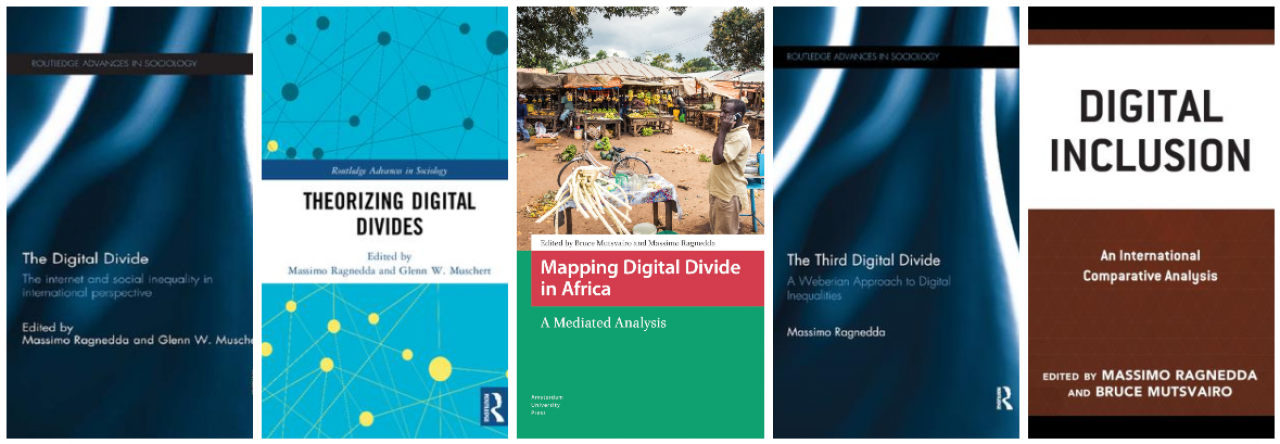Maria Laura Ruiu and Massimo Ragnedda (2024), Digital-Environmental Poverty. Digital and environmental inequalities in the post-covid era, Palgrave.
This book analyzes and understands the complexity of digital poverty by considering its intersecting nature with socioeconomic and environmental poverty. The rapid digital acceleration that has characterized contemporary society in recent decades, notably accelerated by the COVID-19 pandemic, has profoundly reshaped societal structures and dynamics. Our direction depends on how we integrate digital technologies into social structures, utilize them for environmental protection, and master their use rather than being passive consumers.Digital Environmental Poverty is split into three sections. Section I explores the multidimensional nature of poverty, emphasizing the necessity to view it beyond economic terms, and placing it within the contemporary digital-environmental evolution. Section II focuses on the environmental dimension of poverty. Section III offers case studies illustrating the interplay between social, digital, and environmental poverty. The conclusion provides recommendations to anticipate and mitigate the risk of digital environmental poverty.
Beginning with the deconstruction of the concept of poverty, this book explores themes at the intersection of resilience, environmental threats, prosperity, and innovation to demonstrate how digital poverty is connected not only to socioeconomic inequalities but also to environmental poverty. The rapid digital acceleration that has characterized contemporary society in recent decades, notably accelerated by the COVID-19 pandemic, has profoundly reshaped societal structures and dynamics (Amankwah-Amoah et al., 2021; Anandan et al., 2022). Both scholars and policymakers must explore the repercussions of digital evolution on social inequalities and the evolving, nuanced nature of poverty in this digital age. To analyze and understand the complexity of digital poverty, there is a need to rethink the concept holistically by considering the intersecting nature of digital, socioeconomic, and environmental poverty.


Lascia un commento